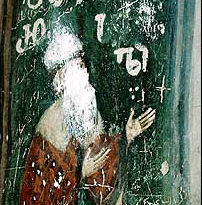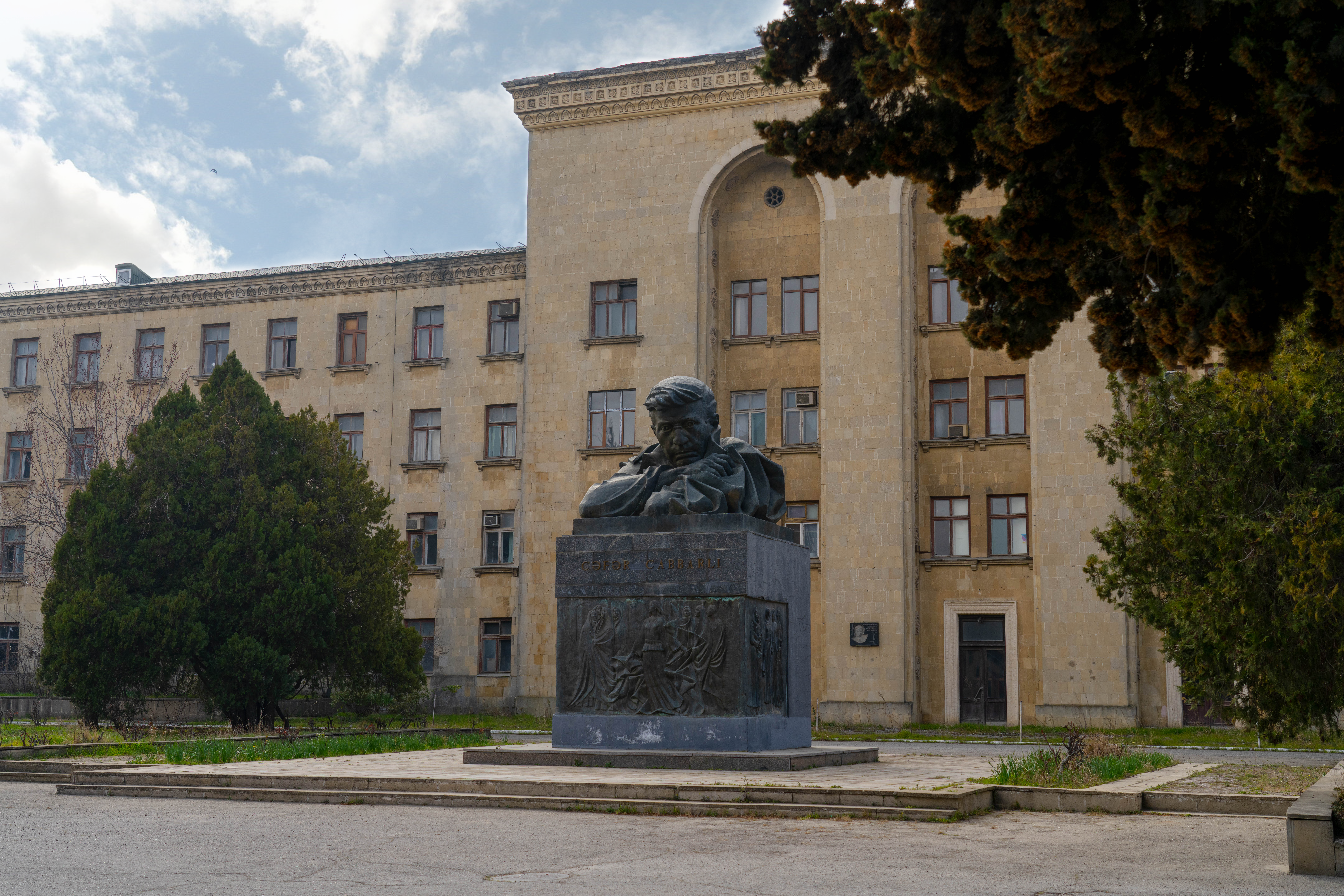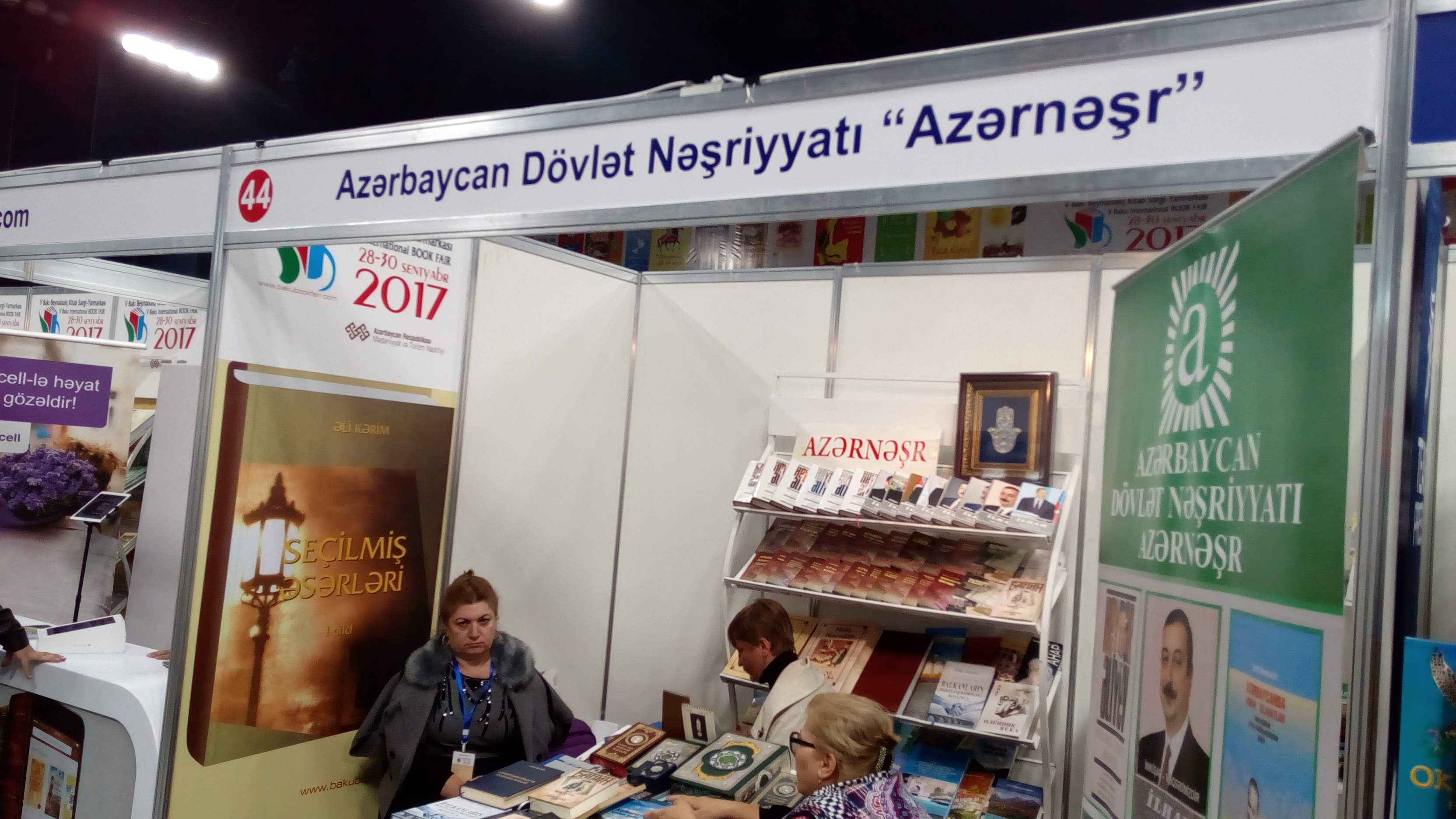|
Ahmad Javad
Ahmad Javad ( az, Əhməd Məhəmmədəli oğlu Cavad; May 5, 1892 – October 13, 1937) was an Azerbaijani poet who is best known for writing the words of the National Anthem of Azerbaijan used under the 1918–1920 Democratic Republic of Azerbaijan, and again since 1991, and another poem named Chirpynirdi gara deniz. Biography Ahmad Javad Akhundzade was born on May 5, 1892, in the village Seyfali of Shamkir rayon. He got his primary education at home, learning Turkish, Persian, Arabic and Eastern literature. In 1912 after graduating from a religious seminary in Ganja he worked as a teacher. During the Balkan war he fought on the Turkish side in a detachment of volunteers from the Caucasus. He published the poetry books "Goshma" (1916) and "Dalga" (1919). In 1918 at the suggestion of Mammed Amin Rasulzade he joined the Musavat Party and from 1920 to 1923 he was a member of its Central Committee, for which he was arrested in 1923 and later freed. Javad wrote about the ... [...More Info...] [...Related Items...] OR: [Wikipedia] [Google] [Baidu] |
Shamkir Rayon
Shamkir District ( az, Şəmkir rayonu) is one of the 66 districts of Azerbaijan. It is located in the north-west of the country and belongs to the Gazakh-Tovuz Economic Region. The district borders the districts of Gadabay, Tovuz, Samukh, Goygol, and Dashkasan. Its capital and largest city is Shamkir. As of 2020, the district had a population of 219,500. Overview There are one city, Shamkir city; seven city-type settlements, of which include Chinarlı settlement, Dallar settlement, Zayam settlement, and Kura settlement; and 58 villages in the district. There are 59 large and middle-size schools, 53 pre-schools, 81 secondary education schools, 1 technical vocational establishments, 22 hospitals and healthcare offices, and 156 cultural establishments in the raion. Statistics Population The population of the district is 192,900 people with 33.49% being urban and 66.51% living in the country. An estimated population density 113.49 person/km2. Men constitute 49.58% ... [...More Info...] [...Related Items...] OR: [Wikipedia] [Google] [Baidu] |
Flag Of Azerbaijan
The national flag of Azerbaijan ( az, Azərbaycan bayrağı), often referred to in Azerbaijani as ( en, Tricolour flag), is a horizontal tricolour that features three equally sized bars of bright blue, red, and green; a white crescent; and a centred eight-pointed star. The flag has become the predominant and most recognizable symbol of Azerbaijan. The bright blue represents Azerbaijan's Turkic heritage, the red represents progress, and the green represents Islam, which is Azerbaijan's majority religion. The Azerbaijani Flag Day, held every year on 9 November, was established by Law No. 595 on 17 November 2009. The day commemorates the first official adoption of the tricolour as a national flag by the Azerbaijan Democratic Republic, which occurred on 9 November 1918. The flag was used by the republic until the 1920 Soviet invasion of Azerbaijan. It was reinstated, with slight variations to the colours and size, on 5 February 1991 following the country's independence from ... [...More Info...] [...Related Items...] OR: [Wikipedia] [Google] [Baidu] |
Alexander Pushkin
Alexander Sergeyevich Pushkin (; rus, links=no, Александр Сергеевич ПушкинIn pre-Revolutionary script, his name was written ., r=Aleksandr Sergeyevich Pushkin, p=ɐlʲɪkˈsandr sʲɪrˈɡʲe(j)ɪvʲɪtɕ ˈpuʂkʲɪn, a=ru-Pushkin.ogg; ) was a Russian poet, playwright, and novelist of the Romantic era.Basker, Michael. Pushkin and Romanticism. In Ferber, Michael, ed., ''A Companion to European Romanticism''. Oxford: Blackwell, 2005. He is considered by many to be the greatest Russian poetShort biography from University of Virginia . Retrieved 24 November 2006.Allan Rei ... [...More Info...] [...Related Items...] OR: [Wikipedia] [Google] [Baidu] |
Shota Rustaveli
Shota Rustaveli ( ka, შოთა რუსთაველი, c. 1160 – after c. 1220), mononymously known simply as Rustaveli, was a medieval Georgian poet. He is considered to be the pre-eminent poet of the Georgian Golden Age and one of the greatest contributors to Georgian literature. Rustaveli was the author of ''The Knight in the Panther's Skin'', a Georgian national epic poem. Biography Little, if anything, is known about Rustaveli from contemporary sources. Shota Rustaveli was born in 1166. He started serving Queen Tamar as a Minister of Finance in 1191. His poem itself, namely the prologue, provides a clue to his identity: the poet identifies himself as "a certain Rustveli." "Rustveli" is not a surname, but a territorial epithet that can be interpreted as "of/from/holder of Rustavi". Later Georgian authors from the 15th through 18th centuries are more informative; they are almost unanimous in identifying him as Shota Rustaveli, a name that is preserved on a fresco a ... [...More Info...] [...Related Items...] OR: [Wikipedia] [Google] [Baidu] |
Musavat
The Müsavat Party ( az, Müsavat Partiyası, from ar, مساواة ''musāwāt'', ) is the oldest existing political party in Azerbaijan. Its history can be divided into three periods: Early Musavat, Musavat-in-exile and New Musavat. Early Musavat (1911–1923) Musavat was founded in 1911 in Baku as a secret organization by Mammed Amin Rasulzade, Mammed Ali Rasulzade (his cousin), Abbasgulu Kazimzade, and Taghi Nagioglu. Its initial name was the Muslim Democratic Musavat Party. The first members were Veli Mikayiloghlu, Seyid Huseyn Sadig, Abdurrahim bey, Yusif Ziya bey and Seyid Musavi bey. Early Musavat members also included future Communist leader of Azerbaijan SSR Nariman Narimanov. This initiative was coming from Mammed Amin Rasulzade, who was then living in exile in Istanbul. In its early years before the first world war, Musavat was a relatively small, secret underground organization, much like its counterparts throughout the Middle East, working for the prosperity an ... [...More Info...] [...Related Items...] OR: [Wikipedia] [Google] [Baidu] |
Soviet Union
The Soviet Union,. officially the Union of Soviet Socialist Republics. (USSR),. was a transcontinental country that spanned much of Eurasia from 1922 to 1991. A flagship communist state, it was nominally a federal union of fifteen national republics; in practice, both its government and its economy were highly centralized until its final years. It was a one-party state governed by the Communist Party of the Soviet Union, with the city of Moscow serving as its capital as well as that of its largest and most populous republic: the Russian SFSR. Other major cities included Leningrad (Russian SFSR), Kiev (Ukrainian SSR), Minsk ( Byelorussian SSR), Tashkent (Uzbek SSR), Alma-Ata (Kazakh SSR), and Novosibirsk (Russian SFSR). It was the largest country in the world, covering over and spanning eleven time zones. The country's roots lay in the October Revolution of 1917, when the Bolsheviks, under the leadership of Vladimir Lenin, overthrew the Russian Provisional Government ... [...More Info...] [...Related Items...] OR: [Wikipedia] [Google] [Baidu] |
Azerbaijanfilm
Azerbaijanfilm ( az, Azərbaycanfilm) is an Azerbaijani state film production company. It is located in the capital Baku. History "Azerbaijanfilm" was established in 1920 as a photo-cinema department at the Azerbaijan SSR People's Commissariat, and in 1923 renamed as "Azerbaijani Photo-Cinema Office" (AFKI). It went through several name changes, including "Azdovletkino" (1926–1930), "Azkino" (1930–1933), "Azfilm" (1933), "Azdovletkinosenaye" (1934), "Azerfilm" (1935–1940), and "Baku Cinema Studio" (1941–1959), before adopting its present name in 1960 as "Azerbaijanfilm" cinema studio named after Jafar Jabbarly. Currently, "Azerbaijanfilm" is a part of the Ministry of Culture and Tourism of Azerbaijan. Notable films Azerbaijan SSR * 1931 '' Qaz'' * 1933 ''Lökbatan'' * 1945 '' The Cloth Peddler'' * 1956 '' O Olmasin, Bu Olsun'' * 1961 '' Balıqçılar'' * 1963 '' Kür'' * 1964 '' İçəri Şəhər'' * 1964 '' Ulduz'' * 1965 '' Mingəçevir'' * 1970 '' Sevil'' * 1977 ''Bi ... [...More Info...] [...Related Items...] OR: [Wikipedia] [Google] [Baidu] |
Azernashr
Azernashr ( az, Azərnəşr) is a major publishing house in Azerbaijan. It is the official state publishing house, based in Baku. Azerneshr started its operations in 1923. Within the period of existence, the publishing house produced tens of thousands of books in different subjects. It has published a number of books in Russian, English, French and other languages. Apart from major European languages, Azerneshr also publishes in languages of minorities such as Talysh, Tat, Lezgi, Kurdish, Udi and Khinalug Khinalug, Khynalyg, or Khinalyg ( az, Xınalıq; Khinalug: ''Kətş''; also rendered as Khanaluka, Khanalyk, Khinalykh, or Khynalyk), is an ancient Caucasian village going back to the Caucasian Albanian period. It is located high up in the mounta ... languages. References Publishing companies established in 1923 Publishing companies of Azerbaijan 1923 establishments in the Soviet Union Publishing companies of the Soviet Union {{Azerbaijan-stub ... [...More Info...] [...Related Items...] OR: [Wikipedia] [Google] [Baidu] |
Union Of Azerbaijani Writers
The Union of Azerbaijani Writers ( az, Azərbaycan Yazıçılar Birliyi) is the largest public organization of Azerbaijani writers, poets and publicists. It has over 1500 members at present. It was founded on June 13, 1934, when Azerbaijan was a part of the Soviet Union as the Azerbaijan Soviet Socialist Republic. History Prior to 1934, Azerbaijani writers grouped in variety of literary unions. In 1923, a group of writers formed the "İldırım" United Organization of Turkic Publicists and Poets. Later, in 1925, another organization known as "Qızıl qələmlər" (''Golden Pens'') was established uniting most writers and regularly conducting literary gathering events. The Union of Azerbaijani Writers was established on June 13, 1934. There were 93 members upon its registration. With its establishment, the organization also started publication of "Ədəbiyyat qəzeti" (Literature) newspaper. To this day, there have been 11 congresses held by the union in 1934, 1954, 1958, 1965, 1 ... [...More Info...] [...Related Items...] OR: [Wikipedia] [Google] [Baidu] |
Nariman Narimanov
Nariman Karbalayi Najaf oghlu Narimanov ( az, Nəriman Kərbəlayi Nəcəf oğlu Nərimanov, russian: Нарима́н Кербелаи Наджа́ф оглы Нарима́нов; – 19 March 1925) was an Azerbaijani Bolshevik revolutionary, writer, publicist, politician and statesman. For just over one year beginning in May 1920, Narimanov headed the government of Soviet Azerbaijan. He was subsequently elected chairman of the Union Council of the Transcaucasian SFSR. He was also Party Chairman of the Central Executive Committee of the Soviet Union from 30 December 1922 until the day of his death. In the realm of literature, Narimanov translated into Turkic Nikolai Gogol's ''The Government Inspector'' and wrote many plays, stories and novels, such as ''Bahadur and Sona'' (1896). He was also the author of the historical trilogy, ''Nadir-Shah'' (1899). One of the central districts and one of the busiest metro stations in Baku, together with a number of streets, parks and halls ... [...More Info...] [...Related Items...] OR: [Wikipedia] [Google] [Baidu] |
Quba, Azerbaijan
Quba () is a city and the administrative centre of the Quba District of Azerbaijan. The city lies on the north-eastern slopes of Shahdag mountain, at an altitude of 600 metres above sea level, on the right bank of the Kudyal river. It has a population of 38,100 (2010). History Quba was mentioned in works of various European geographers, in ancient Arabic and Albanian sources. The castle built by the ruler Anushiravan in the 11th century was called "Bade-Firuz Qubat", and in the Arabic sources of the XII century Quba was mentioned as "Cuba". In the 13th century, in the Dictionary of Geographical names of Arabian scientist Hamabi it was mentioned among the Azerbaijani cities as Kubba, and in the sources of 16th century Quba was referred to as "Dome". Guba (Quba) city originated from the riverside village of Gudial. In the mid-18th century, after moving his residence from Khudat, Hussain Ali became Quba's Khan (tribal Turkic Muslim ruler) and raised fortress walls around th ... [...More Info...] [...Related Items...] OR: [Wikipedia] [Google] [Baidu] |
Gusar
Ghusar ( tg, Ғӯсар) is a riverside village in north-west Tajikistan. It is located in Sughd Region. It is the seat of the jamoat Loiq Sherali in the city of Panjakent , image_skyline = Pajakent Bazaar1.jpg , imagesize = , image_caption = Panjakent Bazaar , image_flag = , image_seal = , image_map = , map_caption = , pushpin_map = Tajikistan#West Asia , pushpin_relief = yes , pushpin_label_position = , pushp .... tojkiston.ucoz.ru References Populated places in Sughd Region {{Tajikistan-geo-stub ...[...More Info...] [...Related Items...] OR: [Wikipedia] [Google] [Baidu] |





